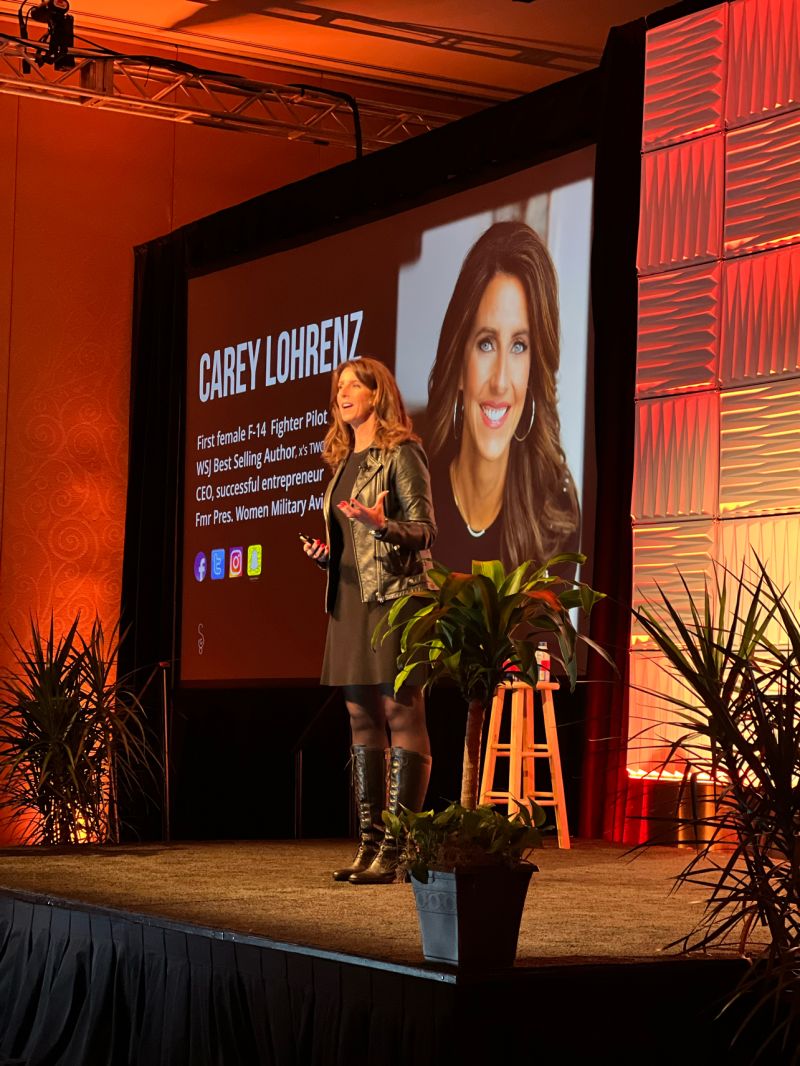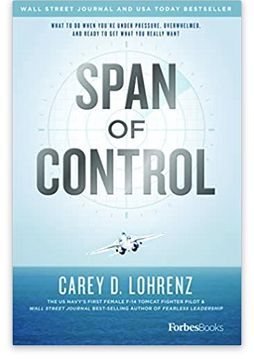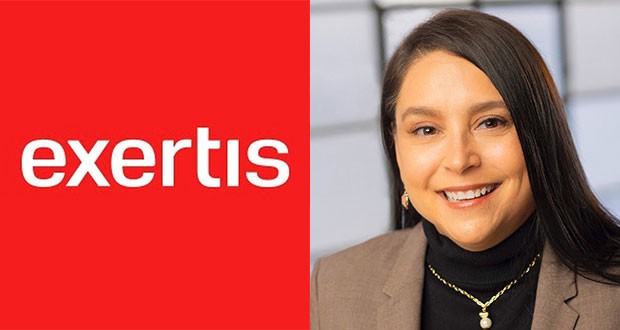Diversity & Inclusion at Exertis Almo
“You are the catalyst — the person who takes a purpose and gets people aligned, so you can get to where you want to go, fast.” ~ Carey D. Lohrenz
To help raise awareness around the DEI (Diversity, Equity, Inclusion) initiative within our organization, and to encourage the practice among our employees and leadership community, we brought in a special guest speaker for our kickoff event to highlight what is possible when women are included within a historically all male occupation.
Carey Dunai Lohrenz, CPAE – the first female F-14 Fighter Pilot and a WSJ Best Selling Author – provided an inspiring and engaging keynote speach at the Exertis Almo National Sales Meeting (NSM) in July 2022.


The timing couldn’t have been better with the 2nd Top Gun movie “Maverick” out in theaters. Everyone was truly inspired and motivated by Ms Lohrenz vivid tales of meeting with resistance and ultimately overcoming the odds to win in a predominately male field.
Everyone who attended the keynote at NSM week received a hardcover copy of Carey Lohrenz’s book “Span Of Control: What To Do When You’re Under Pressure, Overwhelmed, and Ready To Get What You Really Want” to continue the conversation about women and equity in the workplace.
What is Diversity & Inclusion?
There is a lot of buzz these days about diversity and inclusion. Lets explore how Exertis Almo utilizes the terms so that our employees and leadership continue to put them into practice on a daily basis. Diversity and inclusion are clearly defined practices and attitudes which can be measured. These terms are often used interchangeably; yet their meaning and their implications are vastly different.

Let’s break down what diversity and inclusion mean to us individually as well as collectively at Exertis Almo. Diversity and inclusion have an impact both on personal and professional levels. On a personal level, if these practices are done effectively, they allow people from all groups to feel welcomed, represented, and empowered. Effective diversity and inclusion practices also influence the performance of businesses and organizations in powerful ways.
Here we break down how these two perspectives on diversity and inclusion are different yet interrelated. Inclusion is the extent to which we feel included—that our individual identity and contributions are valued. It brings with it a sense of belonging and connectedness. When applied to a workplace, inclusion signifies that all individuals are treated fairly and respectfully, empowering individuals to contribute to the business’s overall success.
The concept of diversity, though closely related to inclusion, is different and more personal. It represents the complex interplay of perceptual differences that shape each person’s unique view of the world. Diversity is what makes each individual unique in their perspective and approach to all aspects of life. The term comprises differences in origin, background, personality, life experience, beliefs, and personal characteristics to name a few. True diversity means a variety of skills, perceptions, and attributes that each individual brings to any business or organization.
The difference is diversity relates to the overall make-up of a person or an organization, while inclusion relates to how different groups are valued and empowered within it. Diversity and inclusion may not necessarily coexist. It is possible for a workplace to be diverse yet not inclusive, and vice versa.
Why are diversity and inclusion important?
Why does this matter to our organization? You may think that individual perceptions of inclusion and diversity in the workplace have no bearing on the success of a business. However, the research shows otherwise.
Many research studies on the benefits of diversity and inclusion have been published by the likes of McKinsey, Deloitte, Harvard Business Review, and others. The results are clear: corporations identified as diverse and inclusive are more likely to outperform their competitors. Research shows diverse companies are 70 percent more likely to capture new markets (HBR, “How Diversity Can Drive Innovation”), while diverse teams are 87 percent better at making decisions (Cloverpop, “White Paper: Hacking Diversity with Inclusive Decision-Making”). In addition, companies with more diverse management teams have led to an average of 19 percent higher innovation revenue (BCG, How Diverse Leadership Teams Boost Innovation).
One area in which these benefits are most telling is gender diversity. McKinsey’s research indicates that gender-diverse companies (which employ an equal number of men and women) are 15 percent more likely to notice higher returns and produce up to 41 percent higher revenue (McKinsey & Company, “Diversity Wins: How Inclusion Matters”). These gains have a ripple effect that goes far beyond individual companies. Their research goes on to show that our gross domestic product (GDP) could increase by twenty-six percent (26%) if the gender gap were equally diversified. This equates to a potential of $12 trillion added to the global GDP by 2025 (McKinsey & Company, “Ten Things to Know About Gender quality”).
What happens when organizations focus on diversity, but not inclusion?
Many organizations use the terms “diversity” and “inclusion” interchangeably. This inaccuracy can lead to problems in the formulation and implementation of diverse and inclusive business practices. For example, a company may focus on diversity but not inclusion by hiring more women or more members of ethnic or racial minorities. However, if the organization does not value the perspectives of members of these groups, they will not be able to retain them for the long term.
True inclusion means that all members of the organization have the opportunity to contribute and to advance, regardless of their gender, race, and/or ethnicity. This goes beyond fairness and equality in hiring practices. It provides the opportunity for all to meet their full potential, so that every employee’s contributions are valued and their voices are heard.
To be authentic, inclusion must factor into company decisions regarding:
- Recruitment
- Remuneration
- Policy
- Training and development
- Performance appraisals
- Advancement opportunities
When structuring teams and committees, leaders should ensure the representation of diverse skills and voices. This leads to a more comprehensive outcome.
How can organizations ensure both diversity and inclusion?
The first step is to ingrain these values in a business’s hiring practices, training, and company policy. Following through with such practices, training and policies promotes a company culture of fairness, respect, dignity, and open communication. These practices also allow everyone to establish a baseline whereby you can continue to measure diversity and inclusion in your organization. When something is measured, it is more likely to become reality.
With a better understanding of diversity and inclusion, personally and in business, organizations are one step further along in their journey. Achieving diversity and inclusion does not exist without putting them into practice. The case for focusing on diversity and inclusion has never been stronger.







